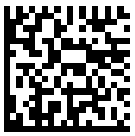The graph presents the number of london under ground station travellers.
Overall, the graph showed a decreasing trend with fluctuation in different period of time
Firstly, in 6am the number of passengers was exactly 100. With the increase of one hour it increased dramatically and reached to peak w...
Check your IELTS writing task 1 and essay, this is a free correction and evaluation service.
Check IELTS Writing it's free


IELTS Writing Answer Sheet
Candidate Name:
singh sandeep
Center Number:
1
2
3
4
Candidate Number:
1
5
1
0
0
Module (shade one box):
Academic:
General Training:
Test Date:
0
D7
D1
M2
M2
Y0
Y2
Y0
YThe bar graph illustrating the percentage of car-owned families in a European country over a 31-year period ( from 1971 to 2001)
The bar graph illustrating the percentage of car-owned families in a European country over a 31-year period ( from 1971 to 2001) k6M
The bar graph illustrates the proportion of car-owned families in a European country over a 31-year period ( from 1971 to 2001).
Overall, the most striking feature of the chart is that, in terms of 1 and 2 or more car owners, they followed a similar pattern, having a significant increase, after only a slight drop in 1991, with the exception of households with no car. Moreover, families which own only 1 car made up the highest proportion over the entire period, with the exception of 1971, when people did not tend to purchase cars for their households. Although, there was a reversing tendency by the end of the period, families with 2 cars, which was previously the least tendency, this situation changed to the households with no cars in 2001.
As far as 1 and 2 or more car owners are concerned, they experienced more or less the same tendency, with the proportion of families with 1 car, which stood at roughly 35% in 1971, rising to 40% in 1981, then falling to the former figures over the next 10 years, and finally growing to 47% by the end of the period. Likewise, the percentage of families preferring 2 or more cars underwent approximately a similar changes over the period, standing at 25% in 1971, increasing to 30% in the next decade, which had the same level with households with no cars in 1991. It also saw a drop by 5%(from 30% to 25%) by 1991, when the purchase power had fallen generally, but again grew to just under 35% by the end of the period.
In contrast, as for the proportion of people who did not buy any cars had a consistent fall over the entire period, which stood at roughly 47% in 1971, kept decreasing to 40% in the following decade, then to 35% in 1991. Additionally, the percentage of families who preferred not to buy a car fell to its minimum, amounting to just under 30% by the end of the period.
The bar graph illustrates the
proportion
of car-owned
families
in a European country over
a 31-year period
(
from 1971 to 2001).
Overall
, the most striking feature of the chart is that, in terms of 1 and 2 or more car
owners, they followed a similar pattern, having a significant increase, after only
a slight drop in 1991, with the exception of
households
with no car
. Moreover
, families
which own
only
1 car
made up the highest proportion
over
the entire period
, with the exception of
1971, when people
did not tend to purchase
cars
for their households
. Although, there was a reversing tendency by the end
of the period
, families
with 2 cars
, which was previously the least tendency, this situation changed
to the households
with no cars
in 2001.
As far as 1 and 2 or more car
owners are concerned
, they experienced more or less the same tendency, with the proportion
of families
with 1 car
, which stood at roughly 35% in 1971, rising to 40% in 1981, then falling to the former figures over
the next
10 years, and finally
growing to 47% by the end
of the period
. Likewise
, the percentage of families
preferring 2 or more cars
underwent approximately a similar changes
over
the period
, standing at 25% in 1971, increasing to 30% in the next
decade, which had the same level with households
with no cars
in 1991. It also
saw
a drop by 5%(from 30% to 25%) by 1991, when the purchase
power had fallen generally
, but
again grew to just
under 35% by the end
of the period.
In contrast
, as for the proportion
of people
who did not buy
any cars
had a consistent fall over
the entire period
, which stood at roughly 47% in 1971, kept
decreasing to 40% in the following decade, then to 35% in 1991. Additionally
, the percentage of families
who preferred not to buy
a car
fell to its minimum, amounting to just
under 30% by the end
of the period
. Do not write below this line
Official use only
CC
7.0
LR
5.5
GR
6.5
TA
5.0
OVERALL BAND SCORE
6.0


IELTS academic The bar graph illustrating the percentage of car-owned families in a European country over a 31-year period ( from 1971 to 2001)
👍 High Quality Evaluation | Correction made by newly developed AI |
✅ Check your Writing | Paste/write text, get result |
⭐ Writing Ideas | Free for everyone |
⚡ Comprehensive report | Analysis of your text |
⌛ Instant feedback | Get report in less than a second |
proportion
families
over
period
(
car
with the exception of
households
car
families
car
proportion
over
period
with the exception of
cars
households
end
period
families
cars
households
cars
car
proportion
families
car
over
end
period
families
cars
over
period
households
cars
but
just
end
proportion
cars
over
period
families
car
just
end
period
Copy promo code:jrY
CopyRecent posts
- The graph shows the underground station passengers in london
- Does the formal pen and paper examination measure intelligence?It is a received notion that pen and paper examination is one of the most efficacious methods of examination, if not the most efficient one, when it comes down to measuring intelligence. In addition, this type of examination is considered to be more suitable in order to examine a vast number of stud...
- owning a home rather than renting oneSelecting a place to live in is a personal decision for most people in the world. Some argue that owning a house much more important instead of renting a home or an apartment. In my opinion, buying a residence provides a long-term benefit in terms of security and investment, even though there are se...
- Whether or not someone achieve their aims is mostly by luck.People have different views about what elements contribute the most to a person’s success. While I accept that luck does have an important role in helping people reach their targets, I would argue that hard work and determination are much more crucial factors leading to the achievement of an individ...
- what is your opinion about this?Some people believe that this is important to keep their home and workplace clean and organized. Keeping places tidy helps some people to be more functional, while it seems endless job which takes a lot of time to some people. This essay will discuss impact of being organized on people’s lives. The...
- some people believe that newly constructed building should be controlled by government, others think that those who build should be free to construct buildingMany people believe that the government should restrict the new buildings construction plan in the metropolis; however, some people think that those who invest in building construction should have the liberty to design it. In my opinion, the government should allow the construction industry without ...
- You stayed in a hotel and forgot some of your belongings there. Write to the manager: • Explaining your situation • Describe what you left behind • What do you want them to do about it.Dear Sir, My name is Abiola Bolaji, I booked a mini deluxe room in your hotel last week. I stayed in the room for three days from December 5th and i checked out on December 7th. I am writing to inform you that there is a little issue, i assume you would be in the best position as the manager to ha...
- Volunteering is good for students or not?It is argued that volunteering should be made part of the school curriculum. This essay agrees with that suggestion completely because of the benefits it brings to pupils. The essay will first look at how voluntary work can help students develop soft skills and then discuss how these extracurricular...
- Many people argue that it is the government’s responsibility to take care of the abandoned people who do not have family and financial supportMany people argue that it is the government’s responsibility to take care of the abandoned people who do not have family and financial support. I agree with this view; however, in my opinion, this support should be supervised and limited. The government should support the disadvantaged people to ma...
- Destination Anthropoly Student After GraduatesFrom the chart above, the highest destination anthropology graduates are full-time work with 52% of them. And the lowest is part-time work and postgrad study with 5%. After finishing their course, there are 15% of them choose part-time work. Also, there are 8% to study again with postgraduate progra...
- Psychology Message for Parents to Their ChildSome of the parents told their children to get what they want with hard work and give the best. This is maybe usually taught by them to give confidence in every step to achieve their dream. But if we look again, in some cases maybe they don't real confidence or translate the real message. Of course...
- destination anthropology graduates and their salariesFrom the chart above, the highest destination anthropology graduates are full-time work with 52% of them. And the lowest is part-time work and postgrad study with 5%. After finishing their course, there are 15% of them choose part-time work. Also, there are 8% to study again with postgraduate progra...
Get more results for topic:
- The bar graph illustrating the percentage of car-owned families in a European country over a 31-year period ( from 1971 to 2001)
